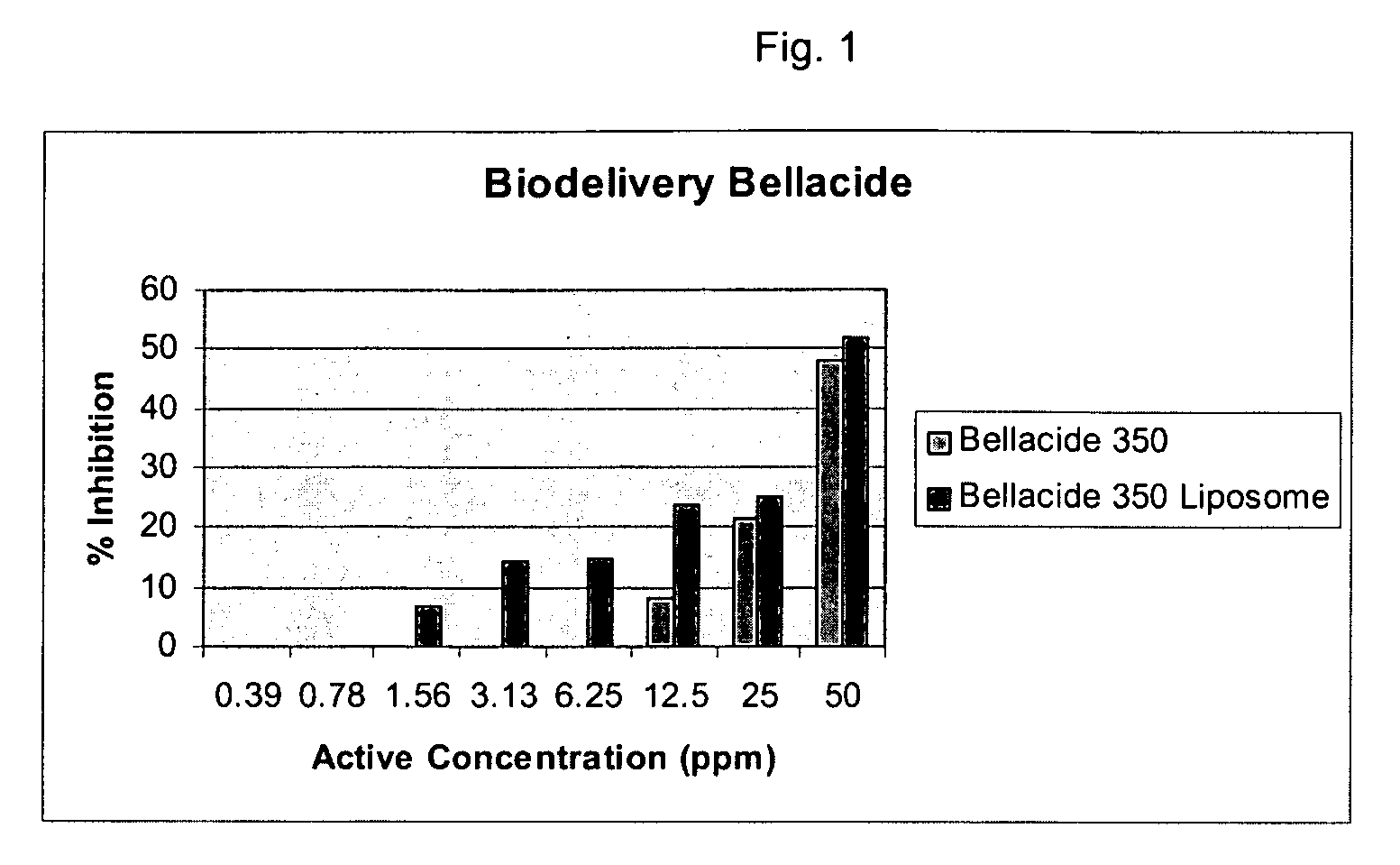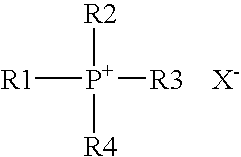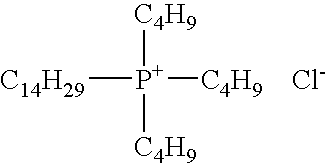Phosphonium salts delivery systems
a technology of phosphonium salts and delivery systems, applied in the field of biodelivery systems, can solve the problems of reducing the efficiency and life time of industrial systems, serious threats to health, and the creation of biofilms that need to be treated, and achieves the effect of reducing the efficiency and effectiveness of introducing, minimizing or eliminating fouling
- Summary
- Abstract
- Description
- Claims
- Application Information
AI Technical Summary
Benefits of technology
Problems solved by technology
Method used
Image
Examples
example 1
[0038]One batch of liposomes (150 nanometers average diameter) was created that incorporated a phosphonium salt biocide, Bellacide 350™ (BWA, Tucker, Ga.) as the active ingredient. The liposomes were then placed in microtiter plates that had microbial biofilms coating them. The microbe inhibiting efficacy of the phosphonium salt liposomes was then compared with non-liposomal phosphonium salt biocide when used at the same concentrations. The liposomes containing phosphonium salt penetrated the biofilm and inhibited the biofilm organisms much more effectively than the non-liposomal phosphonium salt solution.
[0039]The results are shown in the table below and in FIG. 1. The table and chart show the concentration of the phosphonium salt versus the percent inhibition of the biofilm. It is clear from both the table and the figure that the liposomal phosphonium salt formulation exhibited equal or more effective biofilm killing / removal efficiency than the phosphonium salt control in every li...
PUM
| Property | Measurement | Unit |
|---|---|---|
| diameter | aaaaa | aaaaa |
| diameter | aaaaa | aaaaa |
| diameters | aaaaa | aaaaa |
Abstract
Description
Claims
Application Information
 Login to View More
Login to View More - R&D
- Intellectual Property
- Life Sciences
- Materials
- Tech Scout
- Unparalleled Data Quality
- Higher Quality Content
- 60% Fewer Hallucinations
Browse by: Latest US Patents, China's latest patents, Technical Efficacy Thesaurus, Application Domain, Technology Topic, Popular Technical Reports.
© 2025 PatSnap. All rights reserved.Legal|Privacy policy|Modern Slavery Act Transparency Statement|Sitemap|About US| Contact US: help@patsnap.com



